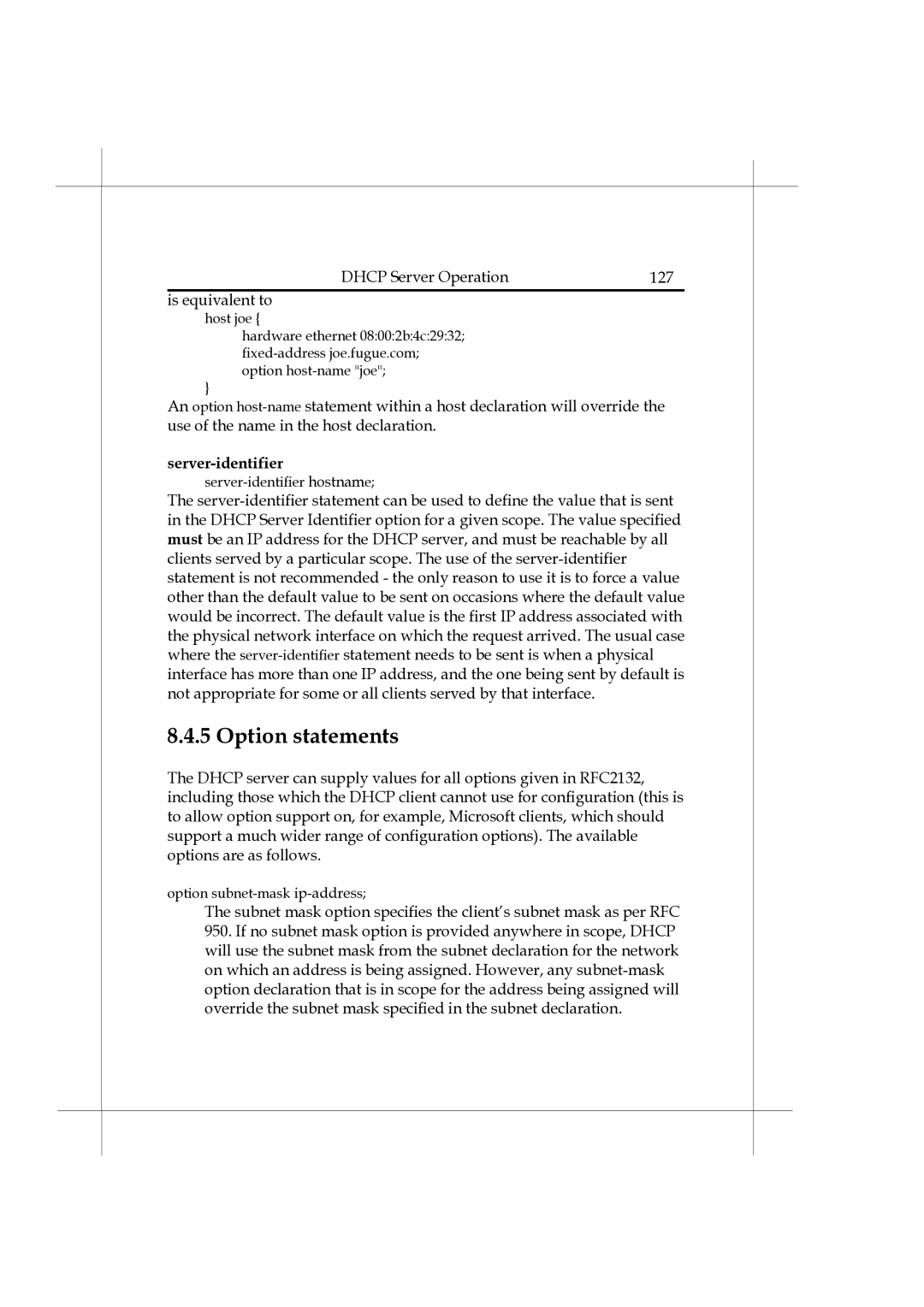Heritage Series ADSL Bridge/ Router | 127 |
DHCP Server Operation |
is equivalent to host joe {
hardware ethernet 08:00:2b:4c:29:32; fixed-address joe.fugue.com; option host-name "joe";
}
An option host-namestatement within a host declaration will override the use of the name in the host declaration.
server-identifier
server-identifier hostname;
The server-identifier statement can be used to define the value that is sent in the DHCP Server Identifier option for a given scope. The value specified must be an IP address for the DHCP server, and must be reachable by all clients served by a particular scope. The use of the server-identifier statement is not recommended - the only reason to use it is to force a value other than the default value to be sent on occasions where the default value would be incorrect. The default value is the first IP address associated with the physical network interface on which the request arrived. The usual case where the server-identifierstatement needs to be sent is when a physical interface has more than one IP address, and the one being sent by default is not appropriate for some or all clients served by that interface.
8.4.5 Option statements
The DHCP server can supply values for all options given in RFC2132, including those which the DHCP client cannot use for configuration (this is to allow option support on, for example, Microsoft clients, which should support a much wider range of configuration options). The available options are as follows.
option subnet-mask ip-address;
The subnet mask option specifies the client’s subnet mask as per RFC
950.If no subnet mask option is provided anywhere in scope, DHCP will use the subnet mask from the subnet declaration for the network on which an address is being assigned. However, any subnet-mask option declaration that is in scope for the address being assigned will override the subnet mask specified in the subnet declaration.

